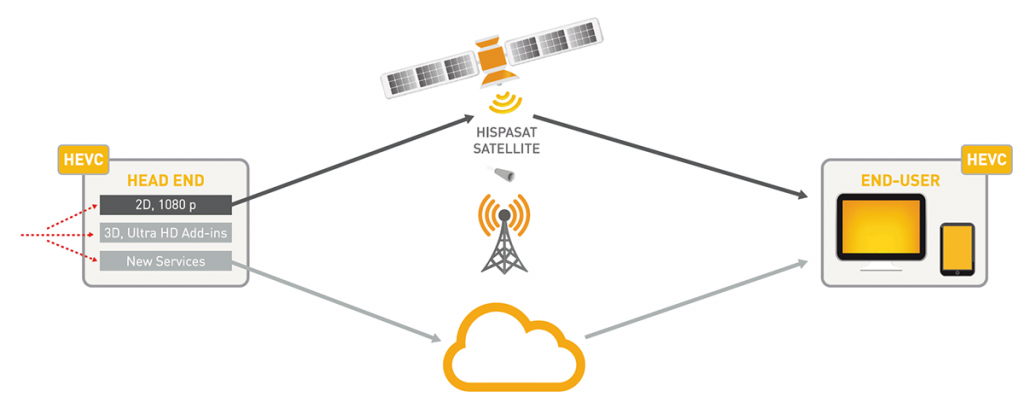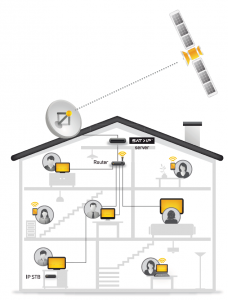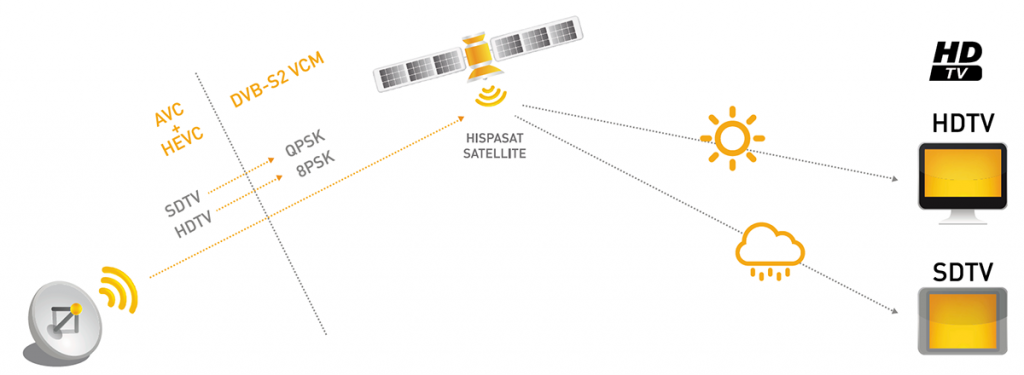
HISPASAT Prize for the Best Telecommunications Satellite Innovation Project
In 2015 HISPASAT closed the event celebrating its 25th anniversary by awarding the Innovation Prize during a ceremony presided by the president of HISPASAT and attended by Begoña Cristeto, Secretary General of Industry and of Small- and Medium-sized Enterprises.
In April, a jury comprised of prominent members of the aerospace industry selected nine finalists from the nineteen projects that had been submitted to the contest
The prize was awarded by unanimous vote to the project “Spacecraft Modular Thermal Platform”, submitted by Alejandro Torres and Donatas Mishkinis of IberEspacio Tecnología Aeroespacial. The runner-up was the project AFeNSat (Antenna Feeding Network for New Generation Satellite Communications), submitted by Carlos Alberto Leal Sevillano, Jesús María Rebollar Machain, José Ramón Montejo Garai and Jorge Alfonso Ruiz Cruz, professors at the Universidad Politécnica de Madrid and Universidad Autónoma de Madrid.
SATELLITES
In 2015, HISPASAT presented the final R&D project “Compact C-Band Feed Assembly for Single and Multi-Beam Missions”, in which the company collaborated with Rymsa to develop a C-band feed for a multiple-feed-per-beam antenna. HISPASAT collaborated on defining the mission that served as a reference for the feed design.
In 2016, HISPASAT will lead an ambitious initiative that aims to reduce procurement costs of a high-throughput satellite (HTS), while continuing to meet the required quality standards. To do so, in 2015, activities aimed at defining the mission have been started and considerable contact has been maintained with the industry to explain the objective and establish the parameters that help define the main lines of action.
PROJECTS
1. Ultra High Definition
UHDTV is, without a doubt, one of the most promising technologies in the field of advanced television systems. This technology provides a fourfold increase in resolution over standard high definition and provides an image sharpness that gives the user a high sense of quality. Satellites are the ideal platform for UHDTV services given their high bandwidth, which is necessary in order to transmit this large amount of information in high quality.
During 2015, HISPASAT carried out numerous initiatives to help develop technologies that would bring UHDTV into homes. HISPASAT has participated in several technological demonstrations in the framework of the IBC fair in Amsterdam, such the use of HDR (High Dynamic Range) as a complement to the 4K channel (UHD) to improve image quality. In addition, it has carried out pilot tests with clients and participated in events to spread awareness about said technology, such as the HISPASAT 4K International Festival and the live broadcast of events in UHD.
HISPASAT continues to work with manufacturers and distributors to develop technology that facilitates the widespread implementation of this type of content, for example new coding systems.
2. Hybrid networks and connected TV
The Internet 2.0 revolution has led to important changes in how users use networks and telecommunications services. In this context, we have what is known as connected TV. This technology combines classic broadcasting with the Internet to offer the best user experience.
In 2015 HISPASAT participated in the European project H2B2VS, which aims to develop new video services using efficient hybrid infrastructure. For example, new coding technologies and interconnectivity between satellite, fibre and cable networks that use Content Delivery Networks (CDN) are being studied. The objective of this proposal is to send content: firstly, through a broadcast network, and secondly, in a way that improves content quality or gives it added value through CDNs. Therefore, one of the key aspects of the project is to synchronise content, since the quality of service for each network is very different.
As for connected TV, one of the most relevant actions in this field is HISPASAT’s promotion of Sat
Sat>IP is a system that allows satellite signals to be distributed over an IP network in the home, closing the gap between the multiscreen world and satellites. This idea, simultaneously developed by HISPASAT in the Saturno project and by SES, led to the creation of an important alliance between these two companies called the SAT>IP Alliance. Its main objective is to promote the standardisation of this system.
3. Advanced satellite communications systems
The SVC Over Satellite project, financed by the European Space Agency (ESA) and involving Airbus as its coordinator, Germany’s Fraunhofer Institute and Inverto, was completed in 2015. The combination of the DVB-S2 system with variable coding and modulation (VCM) and the new coding standard HEVC was studied. Tests on actual satellite capacity were performed successfully and in 2016 the next steps for the project will be carried out. This will include demonstrations of the work already carried out.
This year, HISPASAT has also been involved in changing the DVB-S2 system over its new version, DVB-S2X, which has already been standardised.
The new standard includes new modules that extend the range of satellite communication applications by increasing the efficiency of information transmission and defining more robust modules that are adapted to mobility environments. It also introduces greater coding granularity, lower roll-off factors and techniques that permit simultaneous multiplexing of the content of several transponders in order to further optimise the number of channels that can be broadcast.
With the current aim to innovate and create new models and products that improve satellite communications, a series of workshops called Innovation Jams were held in 2015. These workshops were attended by HISPASAT Client Engineering and Marketing teams as well as members of CTTC (Centre Tecnològic de Telecomunicacions de Catalunya), and focused on addressing a wide variety of topics ranging from backhauling to mobility, bandwidth optimisation and CDNs, among others.
4. Emergencies and security
Emergency services are increasingly sought out by public entities (regional governments, emergency and disaster management organisations, etc.) and satellites appear to be a key solution to restoring communications, serving as a back-up service and being used in mobile units such as ships and helicopters, since they can be quickly deployed and used in any geographic location.
In 2015, HISPASAT developed the OnTime solution to collect, process, display and communicate emergency information for both land and mobile units.
Demonstrations and pilot tests such as the ones for Retegal in Galicia were carried out throughout the year. Next year, work will continue on the development and implementation of a security and emergency solution, primarily in Spain, as well as work on specific advanced products, such as OnTime Helicopters in collaboration with INAER, global leader in emergency air services and HISPASAT partner.
5. Mobility
One of the main milestones in 2015 was the inclusion of HISPASAT as one of the suppliers providing connectivity to RENFE’s AVE train fleet.
The solution allows passengers to connect to the Internet and access exclusive multimedia content and live on-demand television, all while using one or multiple devices and being transported at more than 300 km/h. Providing such services is highly complex, especially considering that a train also passes by many obstacles on its journey.
This type of solution requires a hybrid system that allows connectivity via satellite and 3G or 4G, depending on traffic type and quality. Only when these technologies are used together can all passengers access quality service while travelling at high speeds.
For the satellite, a specific type of antenna must be used since the AVE train fleet is comprised of trains varying in size and shape.
Along these lines, HISPASAT is collaborating with Aicox and Indra to develop an antenna compatible with all types of trains, including high-speed trains, and that has characteristics allowing for greater service efficiency and availability.
Furthermore, HISPASAT, together with CTTC (Centre Tecnològic de Telecomunicacions de Catalunya), launched a project in 2015 to analyse the possibility of including voice backhaul via satellite in high-speed trains. This would also allow passengers to make and receive phone calls at any time during the journey, something that with the existing terrestrial networks is subject to serious limitations.
6. New network design tool
In 2015, HISPASAT, the Higher Technical School of Telecommunications Engineering of the Universidad Politécnica de Madrid and GMV developed an automated IT tool to create more precise network designs. This tool has features that easily modify designs according to any client requirement.




